Dusa Jesih, The doors, (Re)construction, installation - Mestna galerija Ljubljana 2018
Dusa Jesih, Golden eye, acrylic on canvas, polyptych 150x150cm, 2018
Dusa Jesih, E pur si muove, polyptych painting, 4x1,7m, 2018
Dusa Jesih, Loophole I. & II. - Whole, polyptych | (De)construction, acrylic on canvas 120x210cm, 2018
Dusa Jesih, Splitting, acrylic on canvas 1,2x2m, 2018
Dusa Jesih, Rebirth I.&II., | Penta(n)gram, United we stand divided we fall, polyptych c 180cm, acrylic on canvas, 2016
Dusa Jesih, Should have been, "moving paining", from a cycle Modus vivendi, 2017
Dusa Jesih, Another point of view, "moving painting" | Penta(n)gram | united we stand divided we fall,2016
Painter Dusa Jesih, whose artistic idiom is based on the principles of geometric abstraction, showed a site-specific spatial installation entitled The Door and six large, acrylic on canvas polyptychs. In the first exhibition room, where all of the artists were presented with one work each, Jesih transformed the opened passage into the next room, reconstructing it as a Greek cross - one of the three elementary figures in Malevich's iconographic narrative. She changed the rectangular opening in the wall by building four square panels into it, thus adding positive sculptural volume to create a negative sculptural space. The resulting artefact was an installation that symbolically introduced her other exhibited works.
Jesih's polyptychs, consisting of massive rectangular, square or irregularly shaped elements, reveal the process of constructing the pictorial field; the physical, material nature of the paintings is further stressed by the compressed, flattened volumes containing an empty square in or outside their centre. At first glance, her object-paintings seem purely geometric and so set up the expectation that their form is the subject. But, this is mislead-ing. A careful scrutiny of the paintings Loophole I, Loophole 11 and E pur si muove 2018) leads us to process and rearrange or rotate the elements of the images in our minds, producing imaginary content. The works convey a strong message articulated through a symbol, a not immediately appar-ent swastika, which still carries negative connotations in the Western world. No symbol depicted in a painting can in and of itself allude to an ideology, since an image must be conceived on many layers to become a visual whole and an autonomous entity. Jesih rises to the task in a sophisticated manner, juxtaposing the swastika with a star, another highly recognisable political symbol, and putting them in relation with other, more fragile pentagram works and the Malevich "cross" installed in the exhibition space. The suggestive titles (Rebirth I Penta(n)gram, United We Stand, Divided We Fall I and II, 2016, Golden Eye, 2018) point to the current socio-political situation in Slovenia. The artist questions in what way history is repeated in our present, stressing that the way we "put together" a better future is in our hands. By variously combining geometric shapes (such as isosceles or equilateral triangles, rectangles, squares or trapezoids, that is, the visual elements corresponding to the seven pieces of a tangram) or putting them in different relations, Jesih creates complexions: compositions, that we per-ceive, according to the Gestalt theory of direct perception, as more or less abstract figurative forms. The artist makes the visual rhythm more dynamic by contrasting black and white in canvases, and with black, red and gold monochrome canvases -heightening the sense of drama.
In this open relation with the world, ranging from analytical illusionism of geometric abstract representations through to the metaphysics of Malevich's iconographic narrative to the connotative dimensions of ideo-logical symbols, Jesih represents the polarisation of social structures carrying on, in her unique way, the Bauhaus concept of the inseparability of art and everyday life.
Mateja Podlesnik
Dusa Jesih, E pur si muove, polyptych painting, 4x1,7m, 2018
(re-installation 2021)
Dusa Jesih, No dialogue, Hommage a Courbusier, 2017
Slikarka Duša Jesih, abstraktna umetnica, ki formulira svoj Iikovni besednjak po geometrijskih načelih, se na razstavi predstavlja z in situ prostorsko instalacijo The Doors in s šiestimi poliptihi večjih in velikih dimenzij v tehniki akrila na platnu.
V prvem galerijskem prostoru, kamor smo umestili po eno delo vseh umetnic, je Jesihova transformirala odprt prehod v naslednjo sobo in ga konstrukcijsko preoblikovala v grški križ, enega od treh osnovnih znakov iz Malevičevega ikonografskega narativa. Pravokotno formo zidne odprtine je spremenila tako, da je s štirimi zidnimi elementi dopolnila pozitivni kiparski volumen in ustvarila negativen kiparski prostor - praznino. Instalacija je kot umetniški artefakt na simbolni ravni napovedovala njena druga razstavljena dela.
Njeni poliptihi pravokotnih, kvadratnih all nepravilnih robov so sestavljeni iz elementov konstrukcijsko masivnih podokvirov in razkrivajo postopek gradnje slikovnega polja, stisnjen, sploščen volumen s praznim kvadratnim središčem all zunaj njega pa poudarja objektni, materialni značaj slike. Ob avtoričinih objektnih slikah čistih likovnih formulacij, pri katerih naj bi bila vsebina izenačena s formo slike, smo bill na prvi pogled uka-njeni, kajti pozorno gledanje slik (Lina 1, Lina 11, E pur si muove, vse 2018) ter miselno procesiranje in premeščanje ali rotiranje notranjih elementov podobe nas na imaginarni ravni prepričajo o nasprotnem. Dela imajo namreč močno sporočilno vsebino, artikulirano z znakom, prikritim simbolom svastike, ki ima v zahodnem svetu še vedno negativen prizvok. Ker noben upodobljeni znak na sliki sam po sebi ne predstavlja aluzije ideologije, kajti podoba mora biti zasnovana večplastno, da bi se vzpostavila kot vizualna celota in avtonomna entiteta, to sofisticirano stori tudi Jesihova. Omenjeni ideoški znak konfrontira z zvezdo, prav tako močno prepoznavnim političnim simbolom, in v relacijah z drugimi postavitvami, sugestivnimi naslovi (Preporod I Penta(n)gram. V slogi je moč I. in II., 2016, Golden Eye, 2018), in Malevičevim »križem« kaže s prstom na družbenopolitično dogajanje v Sloveniji. Umetnica se prevprašuje o ponovitvah zgodovinskih dejstev v naši sedanjosti in poudarja, da je v naših rokah, kako bomo »zložii« boljšo prihodnost. Z različnimi kombinacijami in relacijami med liki, kot so enakokraki all enakostranični trikotniki, pravokotniki, kvadrati all trapezi, torej z likovnimi elementi sedemdelnega tangrama, ustvarja kompleksije, sestave, ki jih v medsebojnih relacijah po gestalt teoriji neposrednega zaznavanja dojemamo kot bolj all manj abstraktno figurativne pomenske forme. Slikarka dinamizira vizualni ritem del tudi s črno-belimi barvnimi spopadi ter črnimi, rdečimi in zlatimi monokromi inn tako še poglablja dramatično obarvane tematike.
Duša Jesih je v tej odprti relaciji s svetom, v razponu od analitičnega iluzionizma geometrijsko abstraktnih reprezentacij prek metafizičnega Malevičevega ikonografskega narativa do konotativnih razsežnosti ideoloških znakov, upodobila polariliranost družbenih struktur ter na poseben način nadaljevala bauhausovski koncept in prepričanje o neločljivosti umetnosti in vsakdanjega življenja.
Mateja Podlesnik
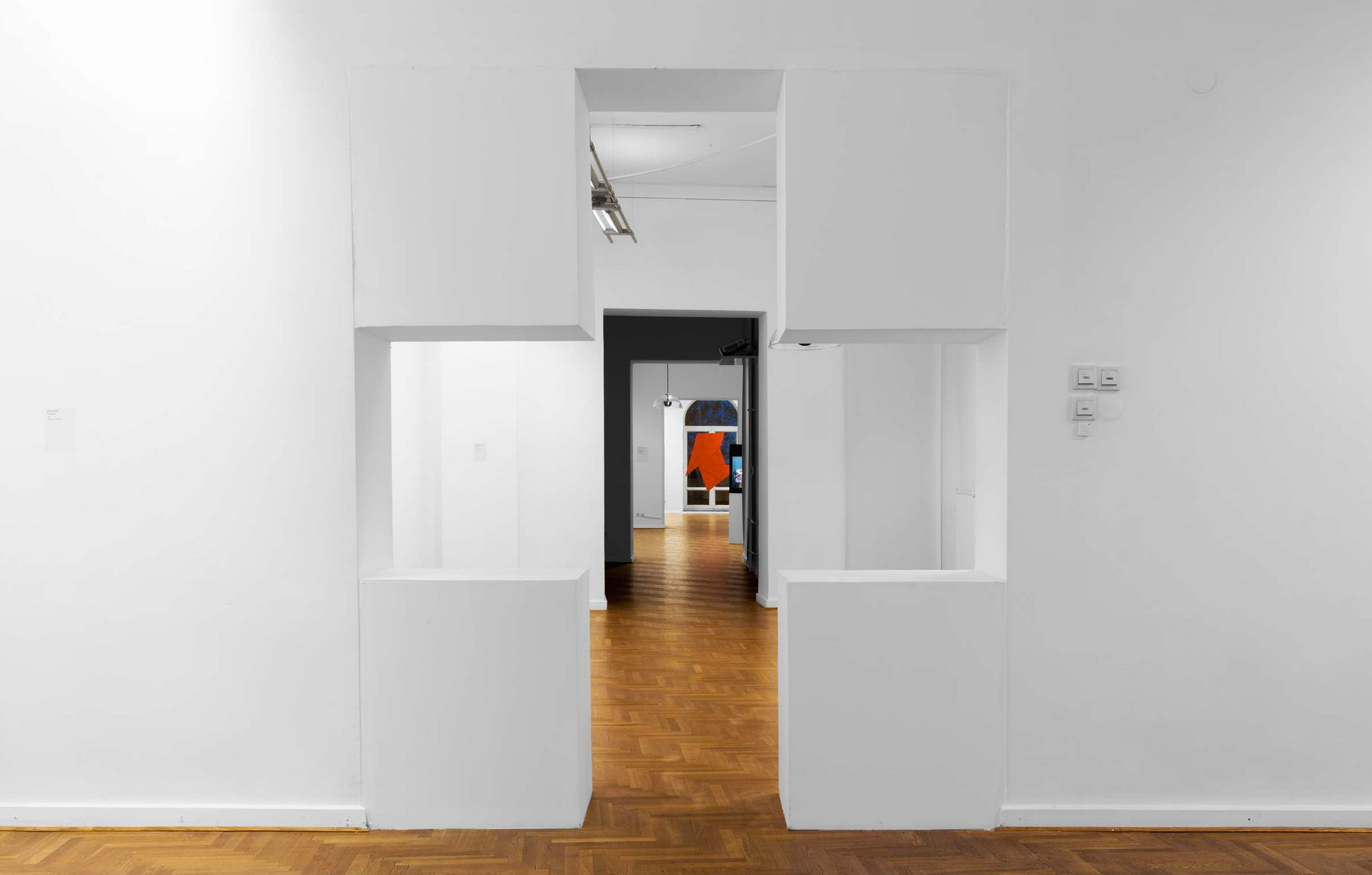
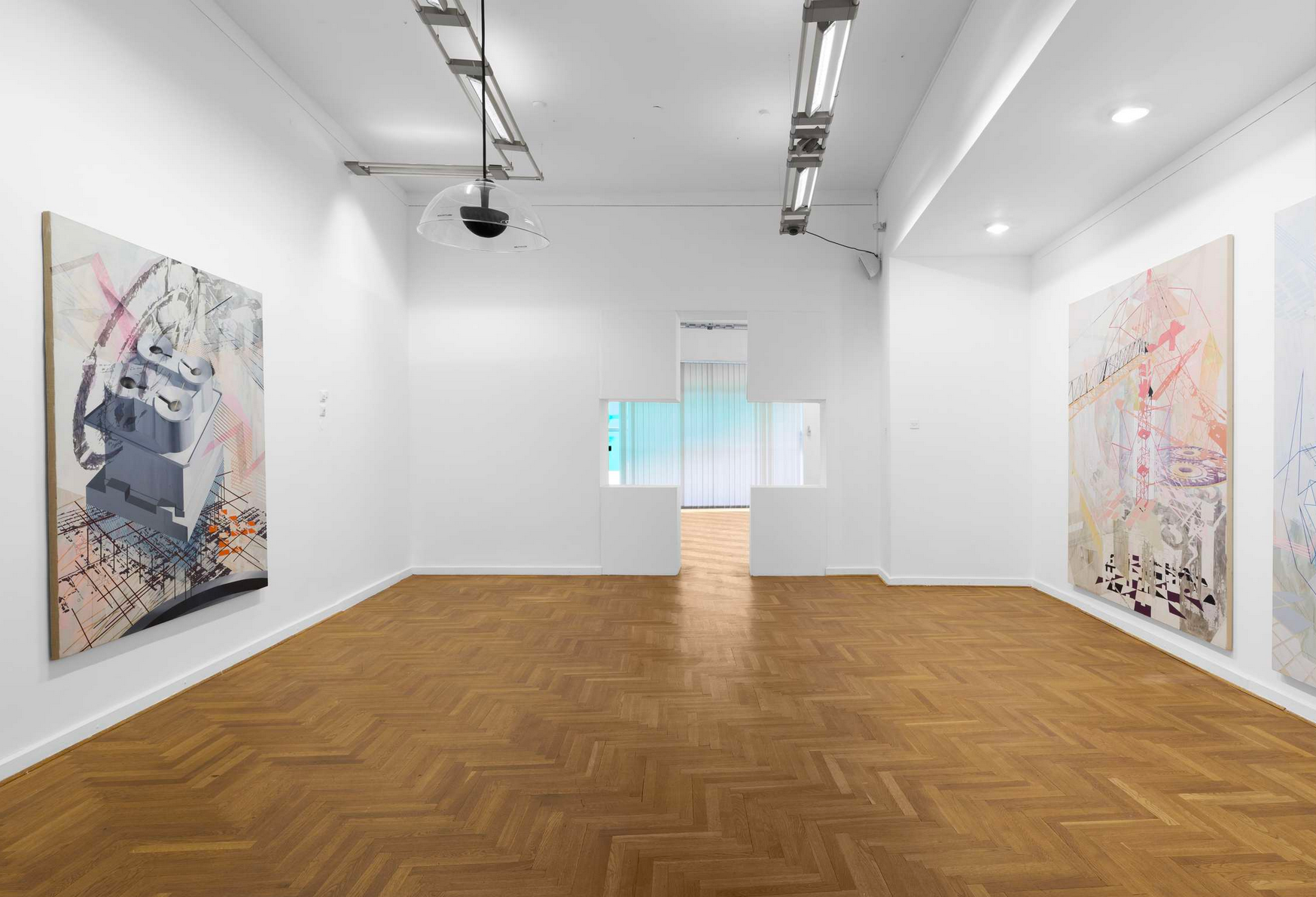
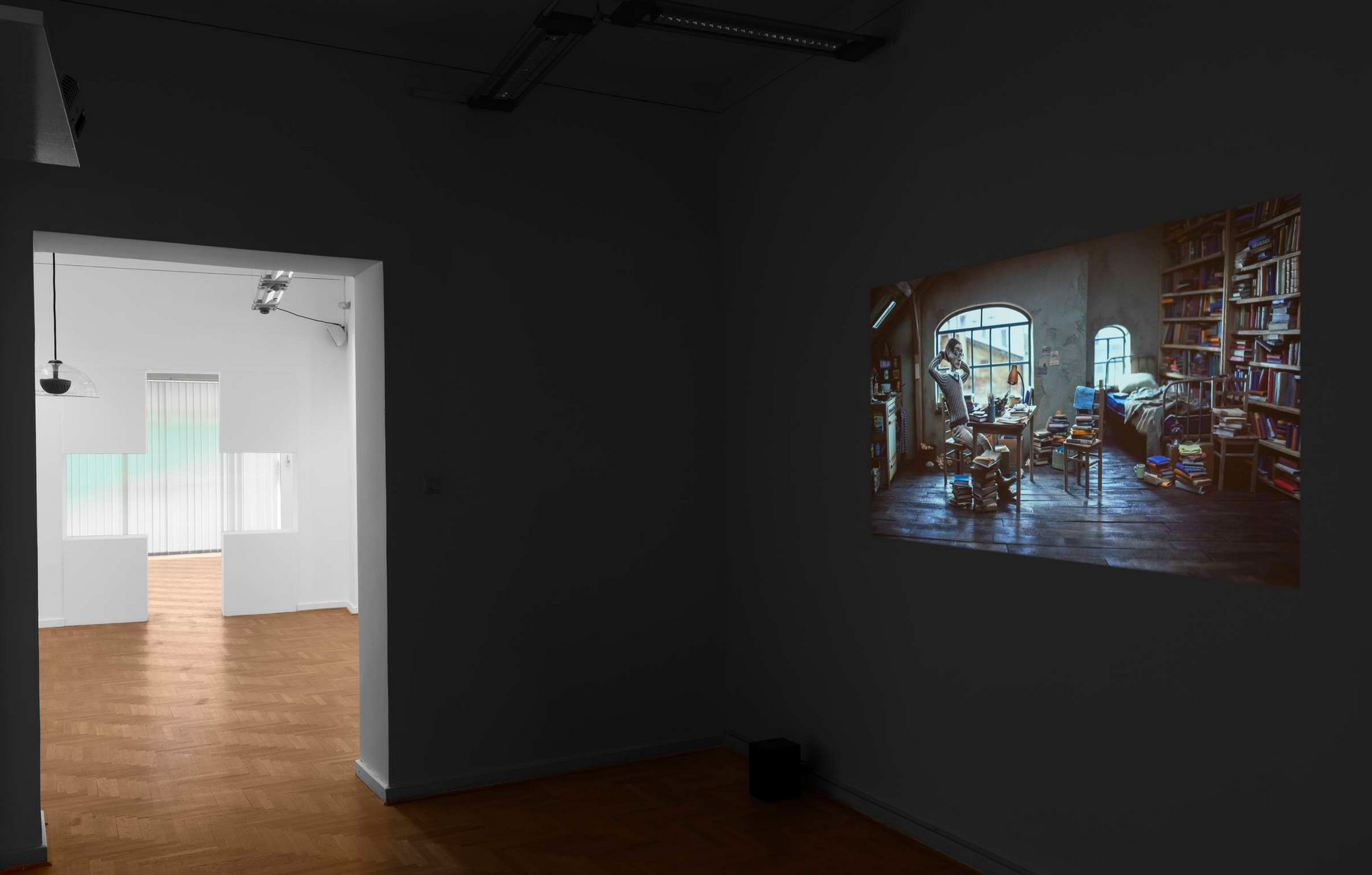
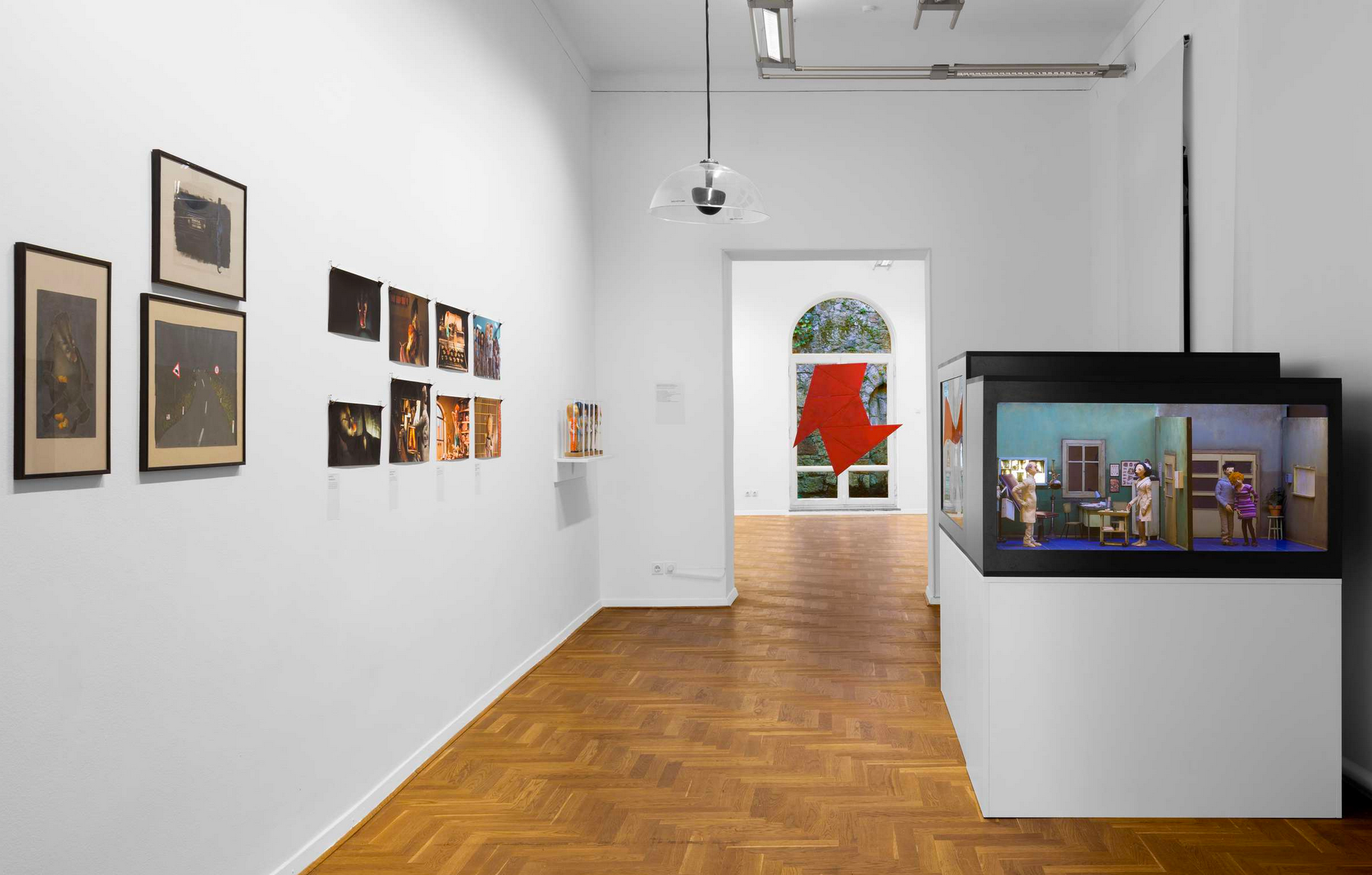
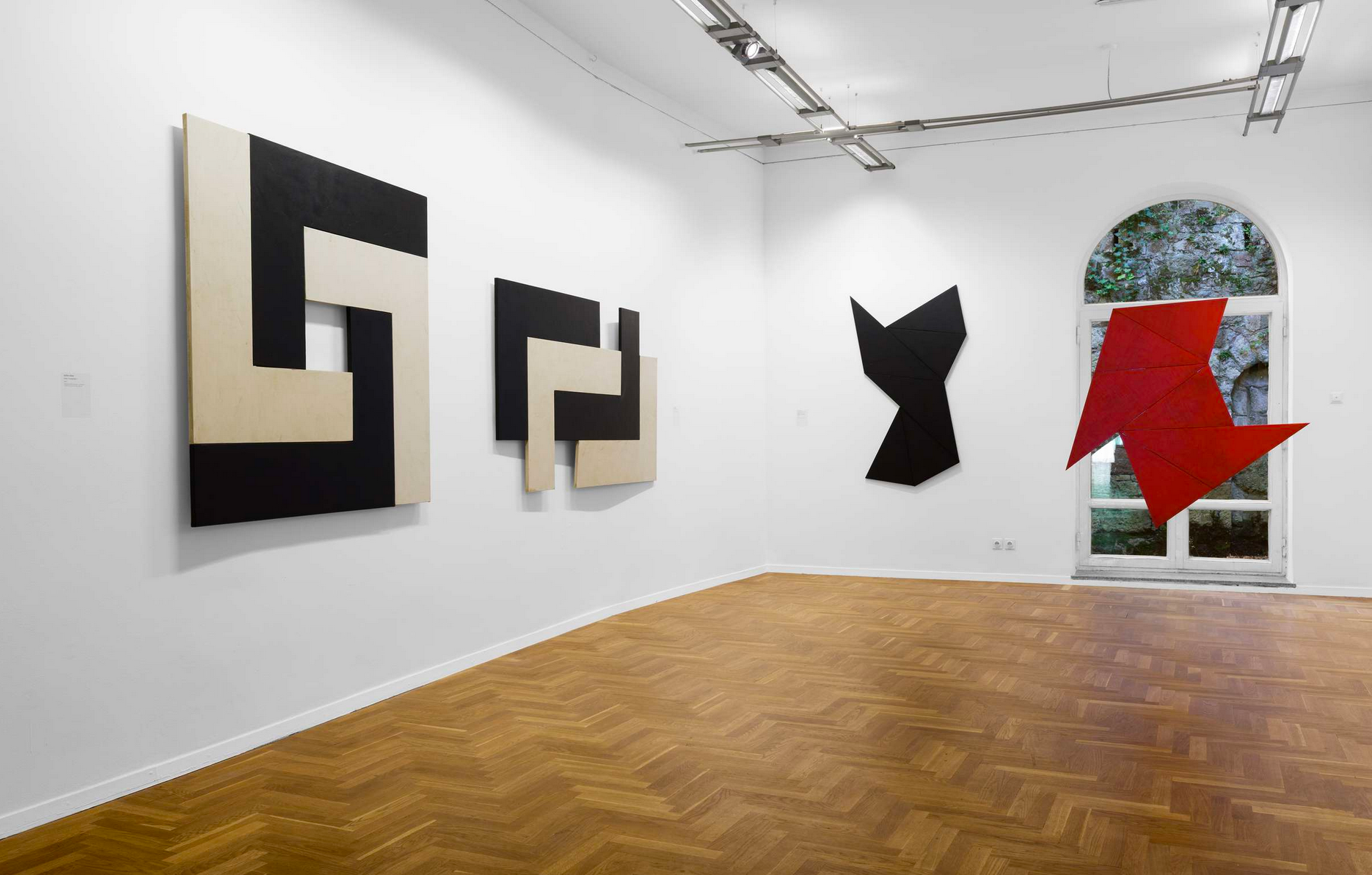
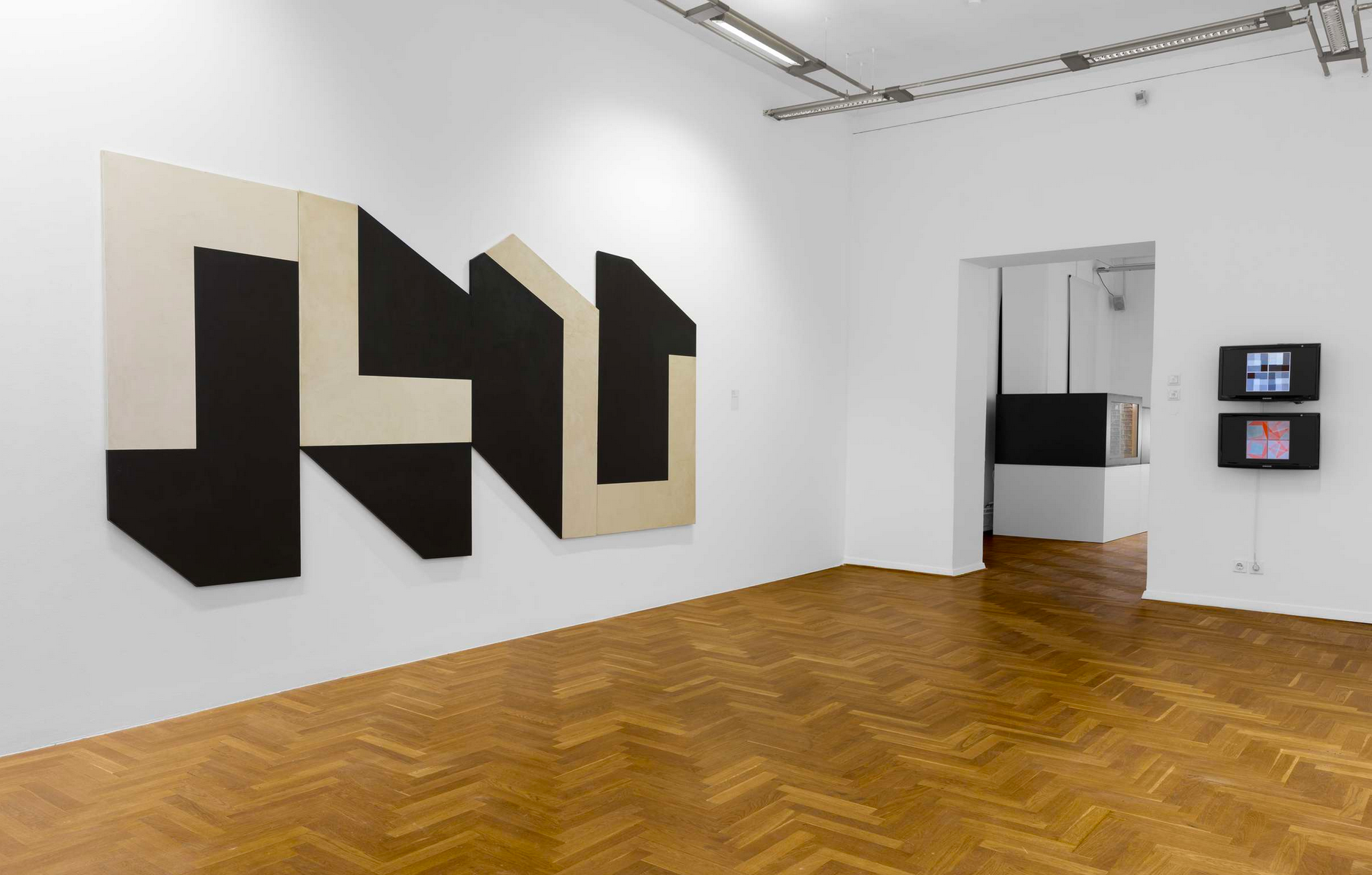
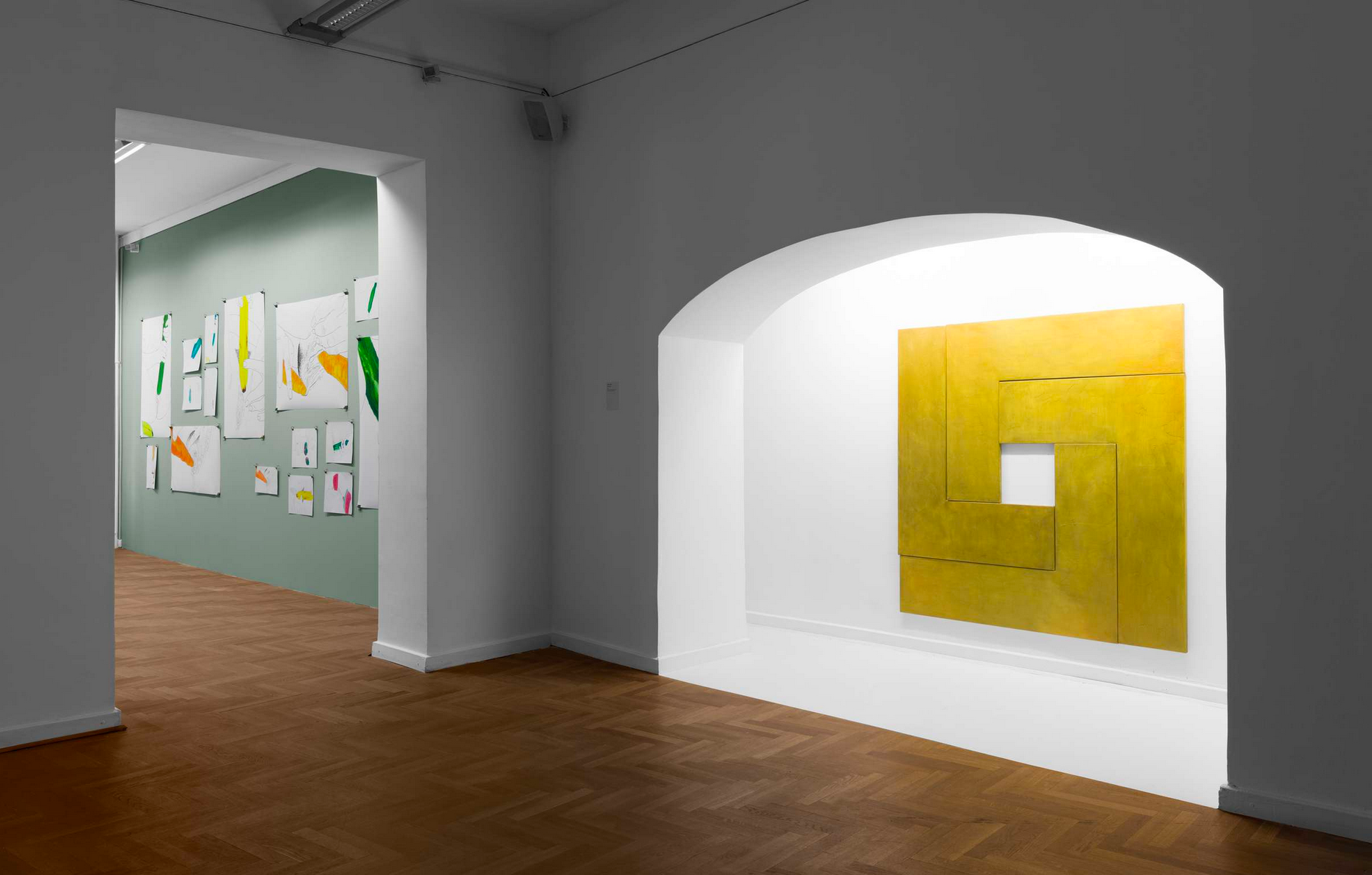
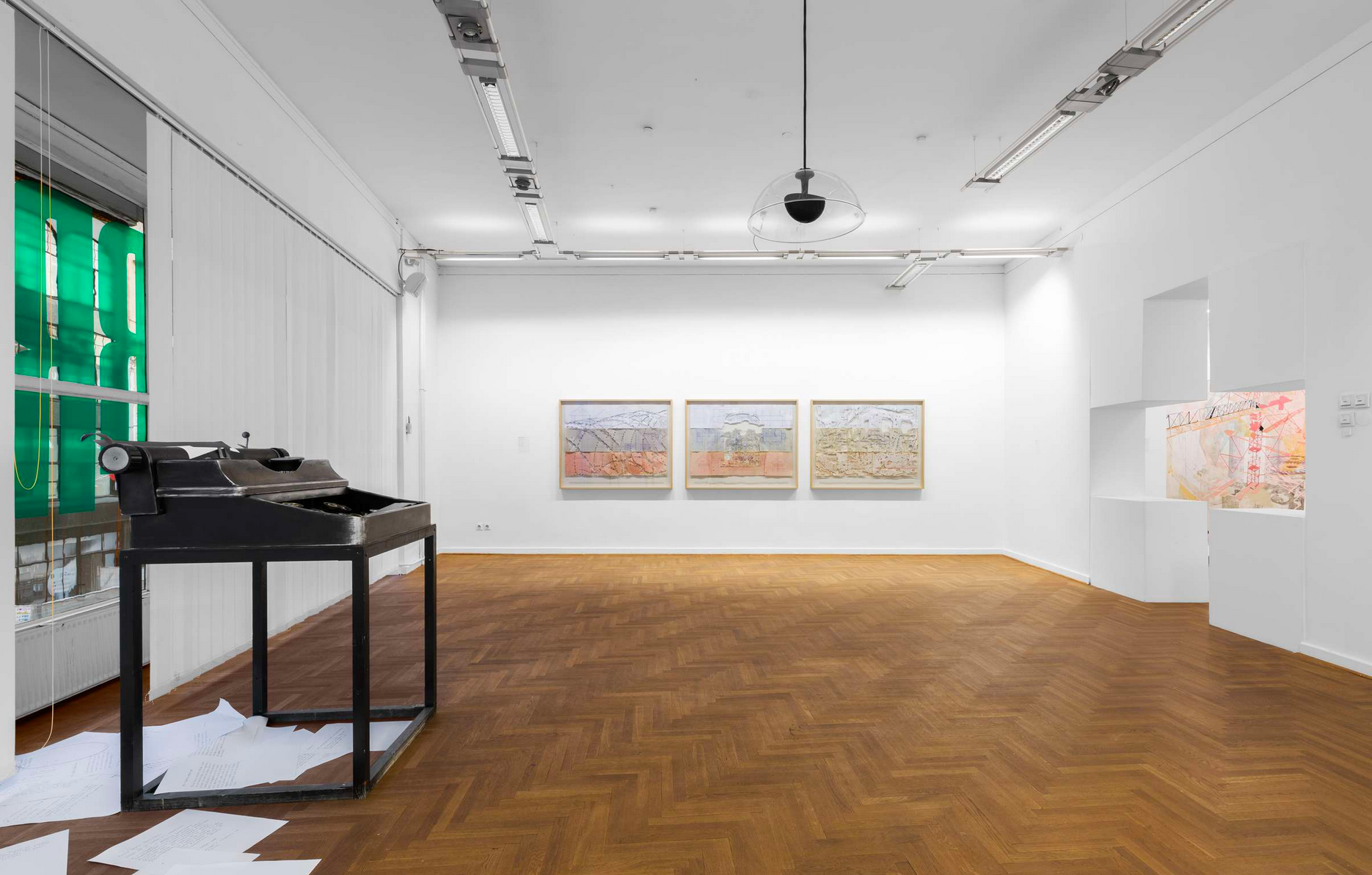
group exhibition | Prrrrrrr | City Gallery of Ljubljana
28. 6. 2018–9. 9. 2018
Artists presented at the exhibition: Suzana Brborović, Špela Čadež, Olja Grubić, Duša Jesih, Simona Semenič & Nada Žgank, Maja Smrekar. Following last year’s group exhibition of male painters, provocatively entitled "Better Doggy Style Than No Style", staging a show featuring an all-female selection was a must this year, in part also due to last year’s polemics a propos the not yet eradicated discrimination against women in society, and therefore in art and culture.
The artists featured in this show wittily strike back with their “pussy style”, as suggested by the exhibition title, underscoring the metaphorical polysemy of the phrase. The selected artists are at different stages in their career: some have just entered the field of contemporary visual art while others have already drawn considerable attention, in Slovenia and internationally, with the consistency of their approaches, their public appearances and their accolades, including winning important international awards. Recently, some of them have also kicked up quite a lot of (unjustified) dust among the general public in Slovenia by broaching burning issues and sensitive or taboo topics in a highly articulate manner.
Through painting, drawing, photography, animated film and site-specific sound and visual installation, the artists address themes such as: the anti-immigration rhetoric in Slovenia and other defence mechanisms of the political management of space through Nazi anti-air-raid architecture (Suzana Brborović); alienation, loss of identity, personal distress, alcoholism and contemporary society’s indifference to these problems (Špela Čadež); the breaking down of sexual taboos through drawn representations of the nude female body and fruits, in an allusive reference to basic erotic experiences (Olja Grubić); the current socio-political reality through geometrical abstract representations of ideological signs and Malevich’s iconographic narrative (Duša Jesih); the dichotomy of gender difference and the stereotypical, inferior position of the female population in relation to the male population, manifested in women’s worse material and social status at virtually all levels of society (Simona Semenič & Nada Žgank); and, last but not least, the obsolete and immature view of the human race as exceptional as well as its arrogant, and at the same time utterly trivial, attitude to other living beings (Maja Smrekar).
City Art Gallery of Ljubljana is exhibiting women artists who have kicked up quite a lot of dust among the general public in Slovenia
Last year, the City Art Gallery of Ljubljana hosted the provocatively titled exhibition Better Doggy Style than no Style, which displayed a selection of male painters, and now it is women artists who are wittily striking back with their own “pussy style”. The current “Prrrrrrr” exhibition is presenting artists who are only just entering the field of contemporary visual art as well as artists who have already drawn considerable attention to their work with the consistency of their approach, public appearances and accolades, including important international awards.
Some of them have, with an articulated visual vocabulary and their concentration on current topical issues, sensitive and taboo topics, caused quite a stir of unwarranted uproar in the general Slovenian public. The exhibition presents works by Suzana Brborović, Špela Čadež, Olja Grubić, Duša Jesih, Simona Semenič & Nada Žgank, Maja Smrekar.